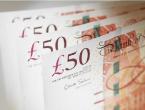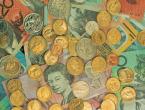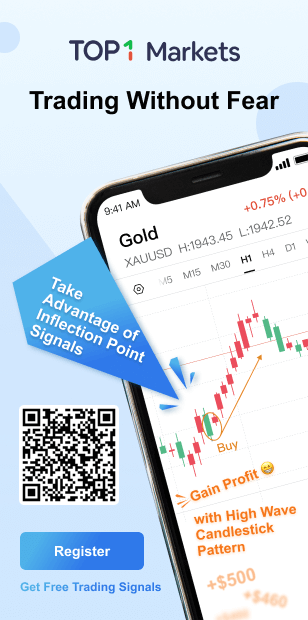World Gold Council: Central bank policy pressures gold prices, but gold may continue to fluctuate
A report issued by the World Gold Council showed that the price of gold fell by 4% in September to around US$1,743 per ounce. This is the second consecutive month that the price of gold has fallen. So far this year, the price of gold has fallen by more than 8%. Factors such as rising dollar and U.S. bond yields, outflows of ETF funds, and the wave of market de-leveraging drive the price of gold down, and the price of gold will also face pressure from major central banks to tighten policies in the future.
A number of factors have affected gold prices three ups and downs in September
In early September, gold’s initial positive reaction to US employment data quickly disappeared. The price of gold fell sharply below the support level of $1810 per ounce.
The US CPI data in August became colder, prompting the price of gold to jump by US$20 per ounce at the beginning, as the market expected that the tightening of monetary policy would be postponed. But the price of gold once again broke through the next support level, which is $1782 per ounce.
As the stock market volatility around September 20 led to a general increase in risk aversion in the global market, the price of gold rose. But the price of gold once again failed to maintain this momentum and instead fell back to $1,745 per ounce.
Figure 1: Gold failed to converge its gains in September, spot gold prices (hours)
The general indifference to gold is also reflected in the futures market. It can be seen from COMEX's net long positions that investment interest in gold is declining over time. Global gold ETFs saw net outflows again in September, although outflows were lower than the previous month (see Table 1).
The short-term model of the World Gold Council shows that the change in the yield of the 10-year US Treasury bond has pushed up the "opportunity cost" of gold, which is the main driving factor for the weak gold price (see Figure 2). However, when yields rose by nearly 25 basis points in the last week of September, gold prices reacted relatively mildly.
Gold futures positions in September were also weak, and ETF funds flowed out, but the net outflow of the two had little effect on the decline in gold prices. Similarly, a stronger dollar increases the opportunity cost of gold, but its impact is relatively small.
Figure 2: Since the third quarter, rising yields, outflows of ETF funds, and a strong U.S. dollar drove the decline in gold prices in September, the percentage of the impact of gold price drivers on the return of the golden cycle
It is worth noting that in September, U.S. Treasury bonds, corporate stocks, U.S. and non-U.S. stock markets all fell, which may be the result of market de-leveraging. The level of stock margin financing and securities lending reached a record high in the second quarter. Entering October, which is often volatile in history, the market's de-leveraging behavior is reasonable, but the World Gold Council believes that this deleveraging is likely to have affected most assets (except energy and industrial metals) .
The Fed's cut is expected to be negative, but gold prices are still supported
After several months, the Fed finally signaled that it was ready to start reducing the scale of asset purchases—possibly as early as November. This hawkish shift comes at a time when there is growing concern that high inflation may last longer than initially expected. The upcoming price cuts, and the possible interest rate hikes that follow, will almost certainly be detrimental to gold. But other factors are also worth considering.
In other regions, gold prices continue to be supported by the central bank. For example, the European Central Bank and the Bank of Japan have maintained loose policies, which should benefit gold in these regions. In addition, as inflation increases (especially in the United States and Europe), the historical performance of gold as a hedge against falling purchasing power may become the focus of attention.
As the market continues to assess the potential impact of economic indicators on central bank policies, the performance of gold may still fluctuate. The demand for portfolio protection and diversification has always existed, but a more optimistic economic outlook may depress gold investment and sentiment
Central bank reserves and changes in ETF positions in different regions
Global central banks: Preliminary data show that the central bank bought 28.4 tons of gold in August. The increase in gold reserves is limited to a few countries, including India (12.9 tons), Uzbekistan (8.7 tons), Kazakhstan (5.3 tons) and Turkey (2.8 tons).
ETF holdings: Gold ETFs had a net outflow of 15.2 tons (approximately US$830 million) in September, reflecting the headwind that gold faced in September (Table 1). Outflows from Europe and North America were only partially offset by funds flowing into Asia. As of the end of September, global gold holdings were 3592 tons ($202.0 billion), the lowest level since April.
Table 1: Changes in gold ETF holdings in different regions*
Stagflation concerns heat up or boost gold demand
Concerns about stagflation seem to be on the rise, so how will gold perform in such an environment?
According to some recent indicators, the economic recovery in the first half of the year may be slowing down. At the same time, inflation remains high. Some people believe that this stage will be short-lived, but if the future cash flow of financial assets is hit by both low growth and high inflation, this may cause damage to investors.
Historical analysis has found that defensive assets perform best in a stagflation environment, and the opportunity cost of non-income assets is reduced. During these periods, driven by the rising risk environment, weak stock markets, lower real interest rates, and a weaker U.S. dollar, gold has achieved good returns.
Figure 3: Gold performs better during stagflation











